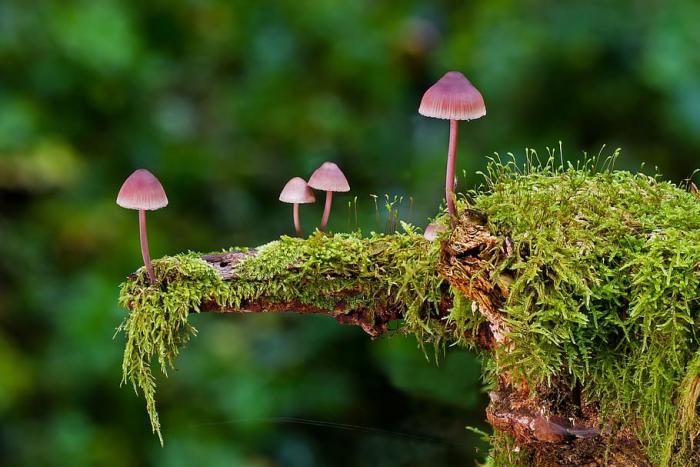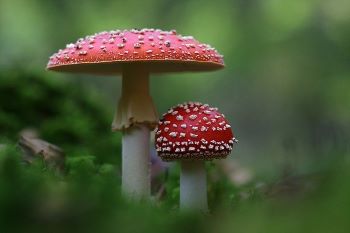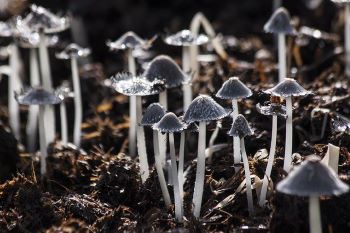
Mushrooms! You may have seen them popping up out of the ground, heard about their poisonous nature, or even eaten them!
Mushrooms are part of the Fungi Kingdom of life. While they are living organisms, they are very different from other living things like plants and animals. As you might already know, plants get their energy from the Sun. Mushrooms, on the other hand, get their energy from decomposing plant and animal matter. This means they absorb energy from plants and animals that have died. Because they don’t need the sun to grow, mushrooms can be found in dark, damp places like under a log or inside a cave. However, they can also be found in sunny spots like on lawns or the sides of trees. They are very versatile organisms!
When we talk about mushrooms, we usually mean the “cap”, or top, of the mushroom. This bell-shaped head is at the top of the mushroom’s “stalk”, or stem. While the cap and stem are what we see when finding mushrooms, most of the fungi is actually hidden underground.
Some mushrooms can be eaten, but some are poisonous! This makes it very dangerous to pick and eat mushrooms you find on your own. Some of these poisonous mushrooms have bright colors like red or orange, but many poisonous mushrooms are just plain white, gray, or brown. Unless you are with a mushroom expert, you should not eat mushrooms you find outside. Other types of mushrooms are known to be edible and can be bought at your local grocery store. A few types of edible mushrooms include: Portabella mushrooms, Button (white) mushrooms, Cremini mushrooms, Shiitake mushrooms, and Oyster mushrooms.


- Only 2 percent of fungi species have been identified!
- Mushrooms evolved on Earth between 715 and 810 million years ago. (This makes them way older than trees which evolved about 385 million years ago!)
- Mushrooms are about 90% water.
- Mushrooms are more closely related to humans than they are to plants.
From Spore to Mushroom by Lisa Owings
What Are Fungi? By Kate Mikoley
